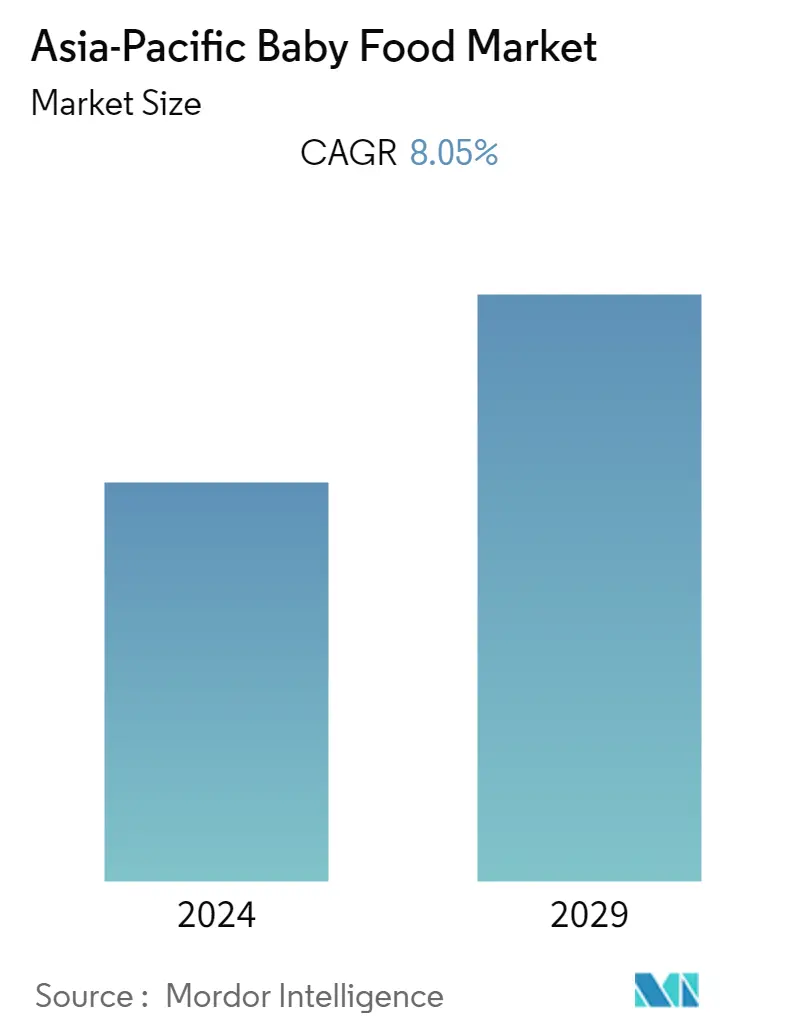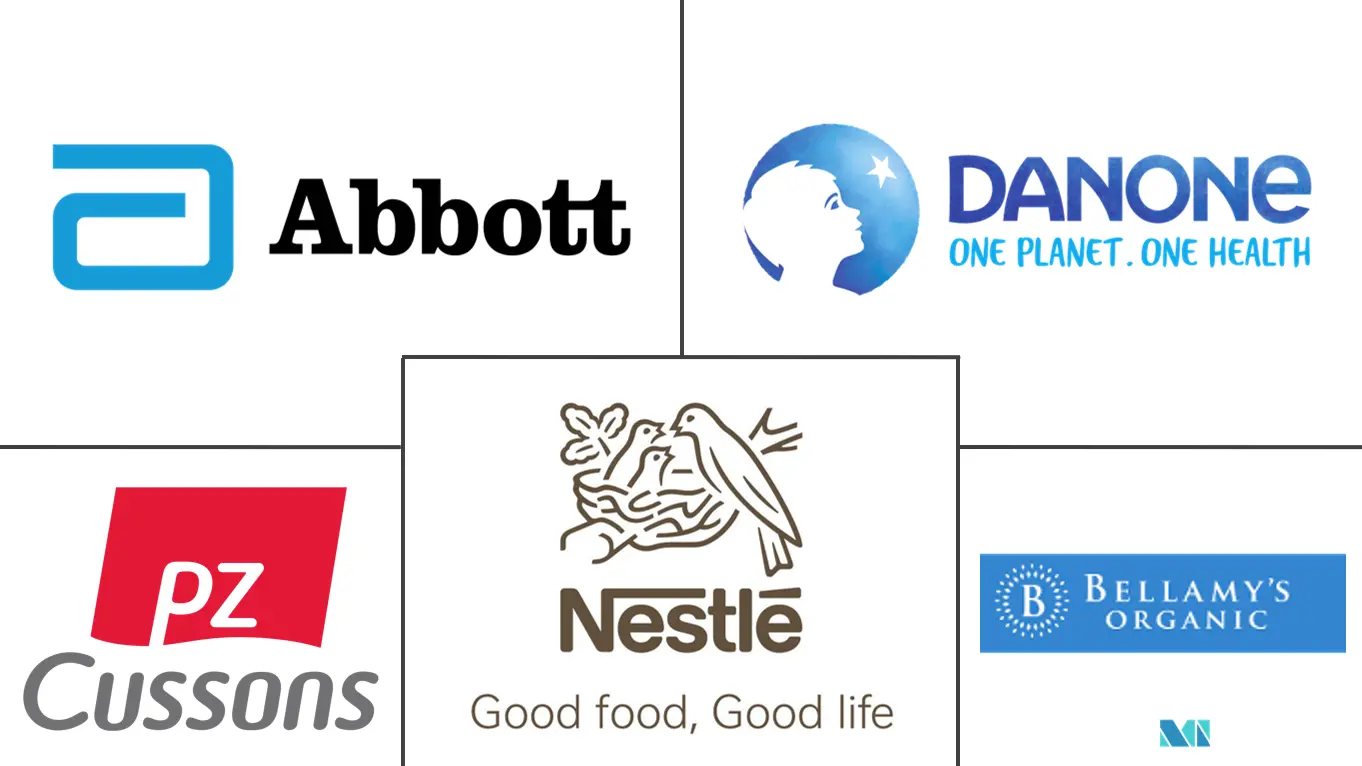Market Size of Asia-Pacific Baby Food Industry

| Study Period | 2019 - 2029 |
| Base Year For Estimation | 2023 |
| Forecast Data Period | 2024 - 2029 |
| Historical Data Period | 2019 - 2022 |
| CAGR | 8.05 % |
| Market Concentration | Low |
Major Players
*Disclaimer: Major Players sorted in no particular order |
Need a report that reflects how COVID-19 has impacted this market and its growth?
APAC Baby Food Market Analysis
The Asia-Pacific baby food market is projected to register a CAGR of 8.05% in the forecast period.
The Asia-Pacific baby food industry is driven by the rising number of malnutrition instances, the increasing number of working women, and concerns for the overall growth of babies. Parents have boosted their spending due to rising disposable income. The rising working population, particularly among women, and urbanization have fostered convenience-oriented lifestyles, boosting the demand for organic baby food and, consequently, baby food sales. The Asia-Pacific baby food market witnessed a shift from conventional to organic products, owing to factors such as a rise in parental concerns over baby nutrition, increased awareness concerning the benefits associated with organic products, and eco-friendly farming techniques. These factors are expected to boost the demand for organic baby food products. Hence, the demand for baby food with no added preservatives is surging at a robust pace globally. To capitalize on the growing demand, key players in the market are focusing on introducing lactose-free, gluten-free products with zero added preservatives.
Government initiatives may further drive the growth of the region's baby food market. For instance, from 2021 through 2025, the National Health Commission of China (NHC) released a new action plan for improving child health. By 2025, the death rates of newborn babies, infants, and children under the age of five will be maintained below 3.1, 5.2, and 6.6 per thousand, respectively, according to the action plan. In addition, the rate of growth retardation among children under the age of five will be kept to less than 5%. The strategy focuses on seven major areas, including newborn protection, congenital disability prevention, healthcare, and early childhood development services.
